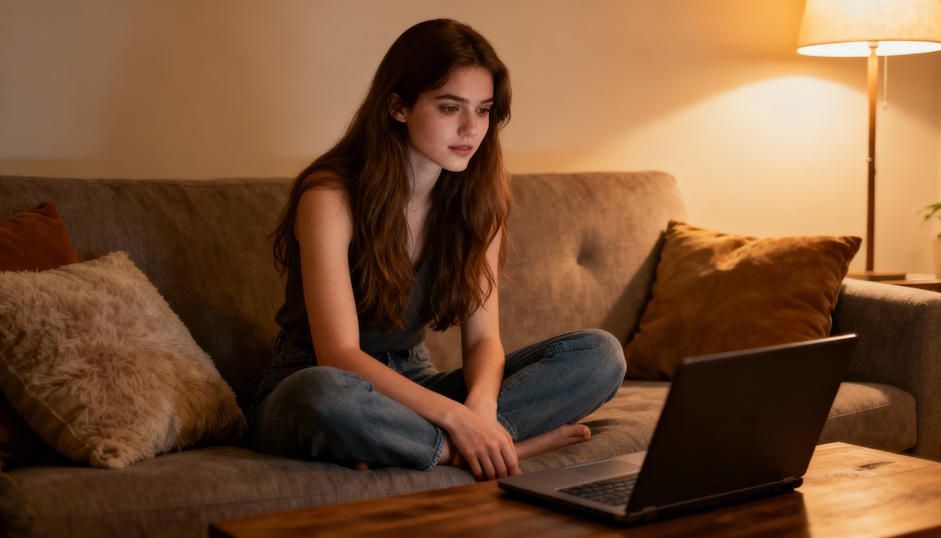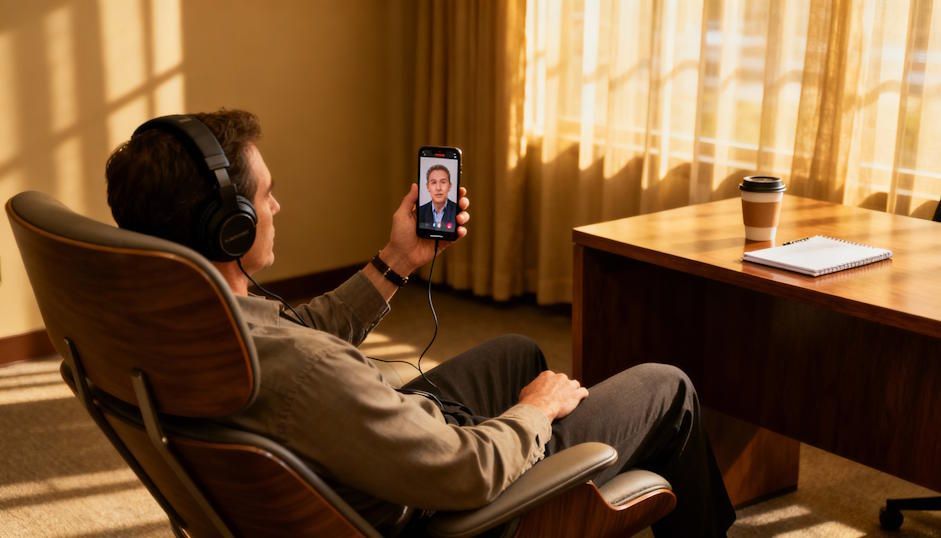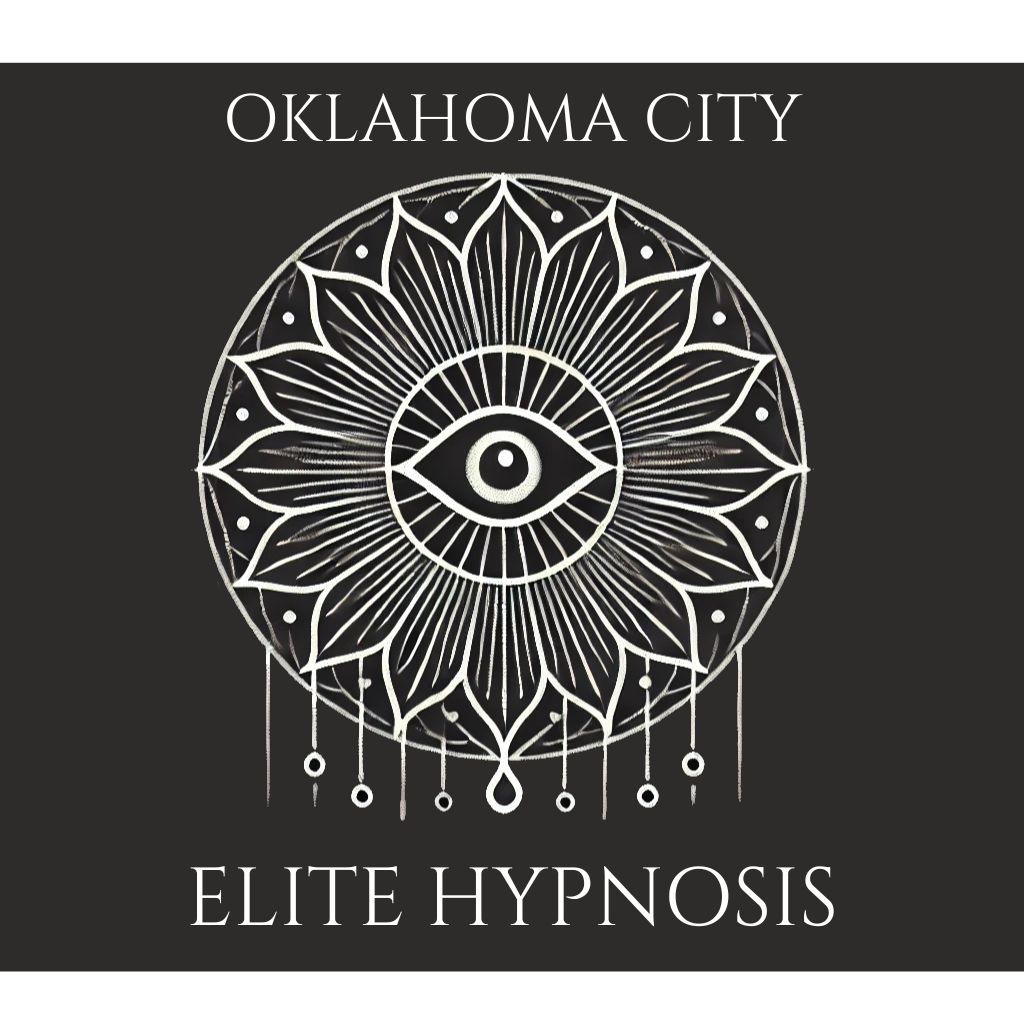Oklahoma City Elite Hypnosis Blog
Take a look around and learn more about how hypnosis can help you!
What makes virtual hypnosis in Oklahoma City work better for busy people?

TLDR: Virtual hypnosis with Oklahoma City Elite Hypnosis offers busy Oklahoma City residents results comparable to in‑person sessions, with convenience, privacy and no commute! Learn how it works, prepare your home setup, and discover if it's right for you.
Many Oklahoma City residents struggle to balance work, family and personal health. Even though the city is known for relatively short commutes—just 22.1 minutes on average (greateroklahomacity.com) (datausa.io), several minutes shorter than the national norm—driving across town still eats up precious time that could be spent on self‑care. Competing responsibilities and lingering concerns about in‑person visits have led to a surge of interest in virtual hypnosis. But is seeing a hypnotherapist over video truly as effective as meeting in person? And if so, how can busy Oklahomans make the most of it?
Over the past few years, research on tele‑mental health has exploded. Studies comparing intensive telehealth programs with in‑person care for issues like depression and anxiety found no significant differences in symptom improvement or quality of life (pmc.ncbi.nlm.nih.gov). Other research specifically examining online hypnotherapy concludes that virtual sessions produce similar levels of relaxation and suggestibility as face‑to‑face work. Meta‑analyses of hypnotherapy more broadly show that remote sessions can be just as effective—and sometimes even more effective—than in‑person sessions, partly because clients are more relaxed in their own environment. In addition to comparable results, remote sessions with Oklahoma City Elite Hypnosis offers practical advantages: no commuting, greater scheduling flexibility, and the ability to work in privacy at home. For busy people in Oklahoma City, these benefits translate into more consistent treatment and faster progress toward goals like smoking cessation, stress reduction or improving sleep.
This article explores how virtual hypnosis works, what equipment and environment you need, how outcomes compare to in‑person sessions and why the Oklahoma City lifestyle makes remote hypnosis especially appealing. Each section is framed as a question to mirror the way people search online, ensuring that this article is AI‑friendly and likely to appear in voice assistants and answer boxes.
How does a virtual hypnosis session work step‑by‑step for busy people in Oklahoma City?
A virtual hypnosis session follows a structured flow similar to an in‑person appointment but leverages technology to eliminate travel time. Here’s what to expect:
- Pre‑session intake – Before your first appointment you complete an intake form online. This covers your goals (e.g., quitting smoking, reducing anxiety), medical history and any contraindications. You may also schedule a brief phone or video consult to answer questions and test your internet connection.
- Environment setup – In the minutes before the session you prepare a quiet space. Ideally choose a room where you can sit or recline comfortably without interruptions. A pair of headphones can enhance focus, and many practitioners recommend dimming the lights or using an eye mask. You’ll also need a stable internet connection and a device with a camera and microphone.
- Induction – The hypnotherapist guides you into a relaxed state via video. This usually involves a combination of deep breathing, progressive muscle relaxation and visualization. Because your eyes are closed for much of the session, the virtual format often feels the same as being in the room with the therapist.
- Therapeutic work – Once in a hypnotic state, your practitioner uses tailored suggestions and metaphors to help you reprogram subconscious patterns. For smoking cessation this might involve visualizing the release of cravings; for stress reduction it might involve anchoring a calm response to specific triggers.
- Emerging from trance and debrief – The therapist counts or guides you back to full awareness, and you discuss your experience. You may receive assignments—such as listening to an audio recording or practicing a breathing technique—to reinforce the work between sessions.
- Follow‑up and scheduling – Virtual sessions make scheduling easier. Without commute time, many clients can book appointments during lunch breaks or early mornings. This flexibility often leads to better adherence, which is critical for long‑term success.

What equipment and environment should I prepare at home in Oklahoma City?
A successful remote hypnosis session depends on good technical setup and an environment conducive to relaxation:
- Reliable internet and device – A stable Wi‑Fi connection is key. Test your speed beforehand and use an ethernet cable if possible. Ensure your computer, tablet or smartphone has a functioning camera and microphone.
- Comfortable seating – Choose a chair that supports your head and back or a recliner that allows you to relax completely. Avoid lying in bed, as it may make you sleepy.
- Headphones or earbuds – They help block out background noise and allow the therapist’s voice to feel more immersive. Wireless earbuds are convenient but wired headphones reduce the risk of connection issues.
- Lighting and privacy – Dim lighting helps you relax, but make sure the therapist can still see your face. Use a sign on your door to prevent interruptions from family members or pets. Turn off notifications and put your phone on Do Not Disturb.
- Water and tissues – Keep a glass of water nearby and tissues in case emotional release occurs. Some clients like to hold a small object (like a smooth stone) to help them anchor the session.
- Optional technology – Some hypnotherapists use additional tools such as screen sharing, digital worksheets or heart‑rate monitors to enhance sessions. Ask your practitioner in advance if any special apps are required.
Preparing an intentional space not only ensures technical smoothness but also signals to your subconscious that it is time to focus on personal change. When clients feel safe and comfortable at home, they tend to enter hypnosis faster and may achieve deeper levels of trance.
Can virtual hypnosis match in‑person outcomes for quitting smoking and stress?
A common question is whether remote sessions can truly deliver results comparable to traditional face‑to‑face hypnosis. Research overwhelmingly suggests they can!
A large study comparing telehealth with in‑person mental health care in a nationwide behavioral health system found no significant differences in outcomes: both groups experienced similar improvements in depressive symptoms and quality of life (pmc.ncbi.nlm.nih.gov.) Although this study focused on general tele‑mental health, its findings are relevant because hypnosis is a form of psychological treatment that relies on communication rather than physical contact.
More specifically, a 2023 study published in The International Journal of Clinical and Experimental Hypnosis reported that video‑based hypnosis is widely accepted and effective, with clients experiencing similar levels of relaxation and suggestibility as in‑person sessions. Furthermore, a systematic review of remote hypnotherapy concluded that video‑based sessions perform on par with—and sometimes even better than—traditional face‑to‑face sessions. Clients in virtual sessions often feel more relaxed because they are in their own environment, which can deepen trance and improve outcomes.
When it comes to smoking cessation, initial data is promising. Analyses of online hypnosis programs for smoking cessation show high success rates—one study found that 86 % of participants remained smoke‑free after six months (with proper selection and follow‑up). While individual results vary, these findings suggest remote hypnosis can be as effective as in‑person approaches for breaking nicotine addiction.
For stress and anxiety, multiple studies indicate that online hypnotherapy is similarly effective to traditional sessions. A study summarizing the effectiveness of online hypnotherapy for stress and anxiety found that participants reported significant reductions in anxiety when sessions were structured properly. The main requirements are a quiet environment, stable internet and a trained hypnotherapist—all factors easily achievable in your own home.
Why does privacy and comfort improve results for Oklahoma City clients?
One of the most powerful advantages of remote hypnosis is the privacy and comfort it provides. Many clients experience performance anxiety or self‑consciousness in office settings; being in your own home can alleviate that.
Hypnosis involves entering a deeply relaxed state and accessing subconscious material. Any fear of judgment or discomfort can impede this process. By contrast, virtual sessions let you create a personal ritual: you might light a candle, play calming music or snuggle under a blanket. This sense of control encourages trust and surrender, two ingredients essential for effective hypnosis.
Studies exploring patient satisfaction with telehealth note that being in a familiar environment reduces physiological stress and allows clients to engage more deeplytrucetalk.com. People who struggle with agoraphobia or social anxiety may find virtual sessions particularly liberating. The privacy of home also makes it easier to process emotions without worrying about others overhearing.
From a practical standpoint, remote hypnosis improves adherence. Fewer logistical hurdles—such as driving across town, finding parking or arranging childcare—translate into fewer missed appointments and greater consistency. Consistent treatment is a strong predictor of success across health interventions, and hypnosis is no exception.

What if my internet drops during a session—how do we handle connectivity issues?
Although technology enables remote hypnosis, connectivity issues can occasionally interrupt the process. Most hypnotherapists have protocols to handle these situations without compromising safety or results:
- Pre‑session backup plan – Before your first session, your practitioner should discuss what to do if the call drops. Common plans include calling you on the phone to finish the session or guiding you out of trance over audio if necessary.
- Self‑guided emerging – Hypnosis is not sleep; you can always open your eyes and return to normal consciousness by counting up from one to five. Your therapist may give you a “trigger word” that automatically brings you back to full awareness if needed.
- Alternative communication – Keep your phone nearby (on silent) so you can reconnect quickly. Some clients choose to record the session on their device (with consent) so they can continue listening if the call fails.
- Wired connections – Using a wired ethernet connection rather than Wi‑Fi reduces the risk of disconnections. Similarly, using a wired headset can prevent Bluetooth issues.
- Rescheduling – If technical problems persist, reschedule the session. Many practitioners offer flexible makeup appointments because there’s no physical office schedule to manage.
Having a clear plan alleviates anxiety about technology and allows you to fully immerse yourself in the hypnosis experience.
Which conditions respond best to virtual hypnosis in Oklahoma City?
While hypnosis can address a wide range of issues, some conditions lend themselves particularly well to the virtual format:
- Smoking and vaping cessation – Remote hypnosis helps reframe subconscious beliefs around nicotine. High success rates in online smoking programs illustrate that distance does not diminish effectivenessmyhigherme.com.
- Stress and anxiety management – Guided relaxation and mental rehearsal techniques work as effectively via video as in personmyhigherme.com. The privacy of home may enhance calm and reduce social anxiety triggers.
- Weight management and emotional eating – Hypnosis helps identify the emotional drivers of overeating and reprogram healthy habits. Virtual sessions allow clients to practice techniques directly in their kitchen or dining environment.
- Sleep and insomnia – Learning to trigger relaxation cues and quiet the mind before bedtime doesn’t require physical presence. Many clients find listening to a recording from their therapist at night reinforces progress.
- Confidence and performance – Athletes, students and professionals use hypnosis to sharpen focus and overcome limiting beliefs. Virtual sessions make it easy to schedule a quick mindset tune‑up before a presentation or game.
- Panic and phobias – For fears like driving on I‑40 or I‑44, virtual hypnosis can incorporate graded exposure and safety rehearsal while the client remains in a controlled environment. Later sessions might involve walking outside with a phone while maintaining connection.
While virtual hypnosis is effective for many concerns, some individuals still prefer the physical presence of a therapist—particularly if they have hearing impairments or technical anxiety. Discuss your preferences openly with your practitioner.
How does Oklahoma City's commute time and lifestyle make virtual hypnosis ideal for busy residents?
Even though Oklahoma City boasts one of the shortest average commutes in the United States—22.1 minutesgreateroklahomacity.com—that’s still nearly half an hour out of your day for each trip. And that statistic reflects a citywide average: many people who live in suburbs or work across town drive much longer. After the COVID‑19 pandemic, the percentage of remote workers shrank from 27 million Americans working from home in 2021 to only 13.8 percent of workers by 2023 (greateroklahomacity.com). As more people return to offices, commute times creep up again.
Virtual hypnosis eliminates this travel altogether. Instead of fighting traffic on I‑235 or searching for downtown parking, you can transition from a work call to your hypnosis session in seconds. This ease of access is especially valuable for busy professionals, parents juggling childcare or anyone with mobility challenges.
Oklahoma City’s sprawling geography means that many residents drive significant distances for specialized services. Remote sessions expand access beyond city limits, serving people in surrounding suburbs and rural communities who might not have a local hypnotherapist. For those with limited transportation options, virtual hypnosis can be the difference between getting help and going without.
Finally, the region’s unpredictable weather—think spring tornado warnings or icy winter roads—sometimes makes travel risky. Virtual sessions ensure continuity of care even when leaving home isn’t advisable. By embracing tele‑hypnosis, Oklahoma City residents gain flexibility, safety and convenience without compromising results.
What questions should I ask when choosing a virtual hypnotherapist in Oklahoma City?
Finding the right practitioner is crucial. Here are key questions to guide your search:
- Are you certified and experienced in conducting virtual hypnosis? Look for training from accredited institutions and experience adapting techniques to online formats.
- What is your specialty? Some hypnotherapists focus on smoking cessation or weight management, while others excel in anxiety or sleep issues. Choose someone whose expertise aligns with your goals.
- How do you ensure privacy and confidentiality? Ask about the platform they use (e.g., Zoom for Healthcare, HIPAA‑compliant software) and their process for handling data.
- What is your plan if the connection drops? Your therapist should outline the contingency procedures described earlier.
- How many sessions do you recommend, and what is your fee structure? Understanding the commitment helps you budget time and resources.
- Do you provide recordings or homework? Many hypnotherapists supply audio recordings so clients can reinforce the work between sessions.
- Can you provide testimonials from other virtual clients? Reviews and success stories (like those on your practitioner’s website) can boost confidence in their methods.
If this conversation has you thinking about how hypnosis could fit into your life, we’d love to help you explore it.
Give Oklahoma City Elite Hypnosis a call or request a callback on our website, and we’ll answer your questions about virtual sessions, discuss your goals and see whether hypnosis feels like the right path for you.
No pressure, just a friendly chat—sometimes the first step toward change is simply talking it through.






